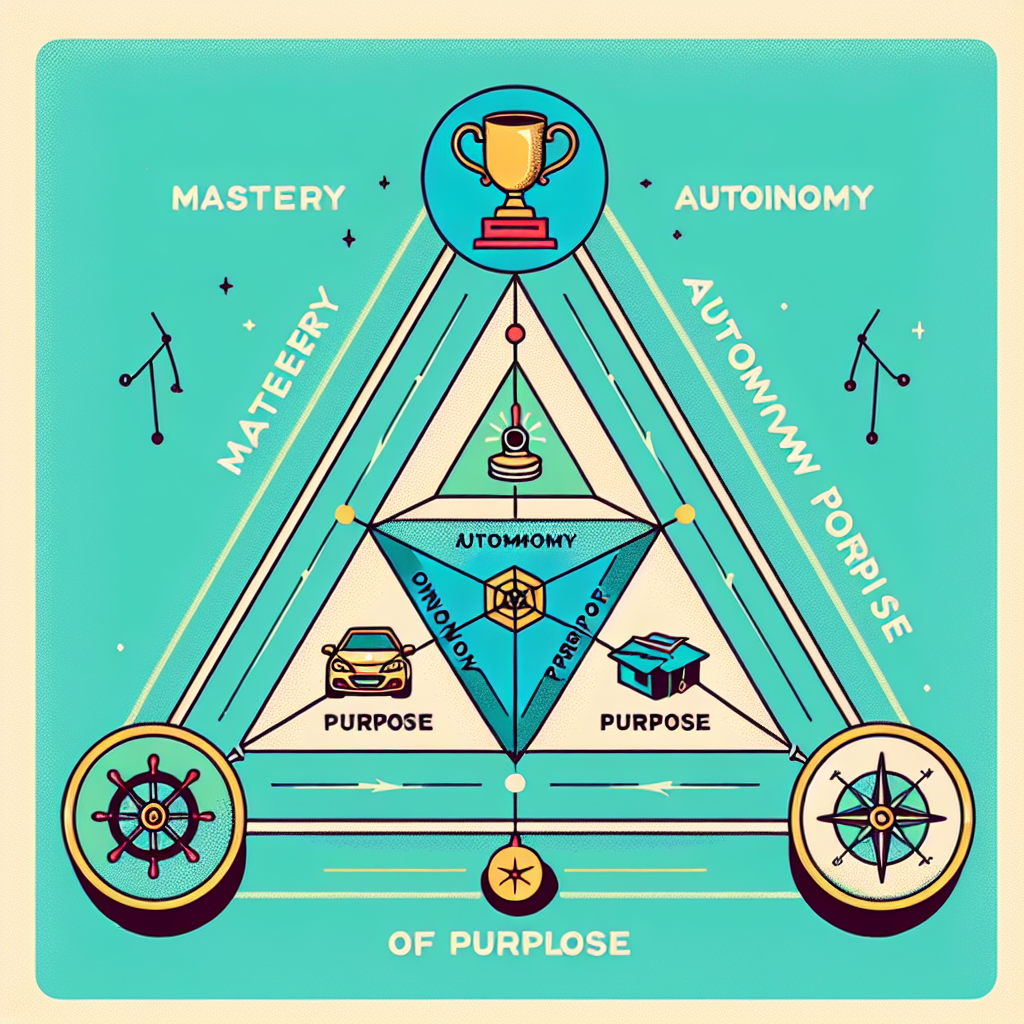RSA Animate: Drive (by Daniel Pink) and Theresa Amabile’s Theory of Motivation share common ground in their focus on understanding what drives human behavior, particularly in terms of motivation at work. However, they approach the concept of motivation from different perspectives and emphasize different factors. Here’s a comparison of the two:
Similarities:
Focus on Intrinsic Motivation:
Both Daniel Pink in Drive and Theresa Amabile’s theory emphasize intrinsic motivation as a key driver of human productivity and creativity.
Pink highlights the role of intrinsic motivators like autonomy, mastery, and purpose in fostering motivation.
Amabile’s Componential Theory of Creativity also stresses the importance of intrinsic motivation, particularly how people are most creative when they are driven by interest, enjoyment, or personal challenge rather than external rewards.
De-emphasizing Extrinsic Rewards:
Both theories downplay the importance of extrinsic motivators such as financial rewards or punishments, which can sometimes undermine creativity and long-term motivation.
In Drive, Pink criticizes the traditional “carrot and stick” approach, suggesting that rewards and punishments can decrease motivation for tasks that require creativity.
Amabile’s research similarly suggests that focusing too much on external rewards (such as financial bonuses) can diminish creativity, particularly in tasks requiring complex problem-solving.
Creativity and Work Environment:
Both perspectives are concerned with how creativity flourishes in the right work environment.
Amabile highlights that work environments that support autonomy and reduce pressures from external evaluation can foster creativity.
Pink’s idea of creating environments where autonomy, mastery, and purpose are emphasized aligns with Amabile’s ideas, as these factors contribute to better performance and innovation in the workplace.
Differences:
Scope and Focus:
Daniel Pink’s Drive is broader, focusing on overall human motivation and behavior in various domains (work, education, etc.). His framework identifies three key elements: autonomy, mastery, and purpose as the fundamental drivers of motivation, especially for tasks requiring creativity.
Theresa Amabile’s Theory is more focused on the psychology of creativity in the workplace. Her Componential Model of Creativity looks at how creativity emerges from a combination of domain-relevant skills, creativity-relevant processes, and intrinsic motivation, with a primary focus on the creative process.
Theoretical Framework:
Pink’s model is somewhat behavioral and motivational, drawing on findings from psychology and economics to argue for a new paradigm of motivation in business.
Amabile’s theory is more grounded in psychological research and experimentation on creativity, with a particular focus on how creativity happens in organizational settings. Her model is more complex in this regard, considering both internal factors (like skills and motivation) and external factors (such as the work environment).
Key Concepts:
In Pink’s framework, autonomy (the need to direct our own lives), mastery (the desire to get better at something meaningful), and purpose (the desire to do something bigger than ourselves) are central.
In Amabile’s theory, domain-relevant skills, creativity-relevant processes, and task motivation are the key components for creativity. Her focus is more on the skills and cognitive processes necessary for creative thinking, in addition to motivation.
Application and Context:
Pink’s ideas have wide-ranging applications beyond creativity—he applies his theory to education, entrepreneurship, and management in general.
Amabile’s theory is mostly applied in organizational and work settings, specifically focusing on how to foster creativity in the workplace.
Conclusion:
Both Daniel Pink’s Drive and Theresa Amabile’s theory of motivation emphasize the importance of intrinsic motivation in fostering creativity and productivity. However, Pink’s work provides a broader motivational framework applicable to a wide range of activities, while Amabile’s theory is more focused on creativity within professional and organizational contexts. Pink is concerned with autonomy, mastery, and purpose, whereas Amabile adds the dimension of domain-relevant skills and creativity-relevant processes to understand how creativity works.

